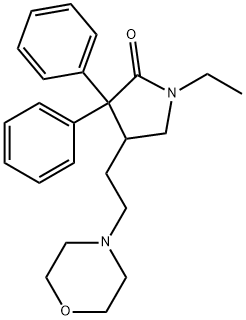CHEMICAL AND PHYSICAL PROPERTIES
| Physical Description | Solid |
|---|---|
| Melting Point | 217-219 |
| Solubility | Sparingly soluble |
| LogP | 3.6 |
| Stability/Shelf Life | STABLE IN LIGHT & IN AIR /HYDROCHLORIDE/ |
| Collision Cross Section | 183.4 Ų [M+H]+ [CCS Type: TW, Method: Major Mix IMS/Tof Calibration Kit (Waters)] |
| Kovats Retention Index | 2874 2874 2860 2890 2906 |
| Other Experimental Properties | CRYSTALS FROM ISOPROPYL ETHER; BITTER TASTE; MP: 217-219 °C; SOL IN WATER; SPARINGLY SOL IN ALC; SLIGHTLY SOL IN CHLOROFORM /HYDROCHLORIDE/ |
SAFETY INFORMATION
| Signal word | Warning |
|---|---|
| Pictogram(s) |
 Exclamation Mark Irritant GHS07 |
| GHS Hazard Statements |
H317:Sensitisation, Skin H319:Serious eye damage/eye irritation |
| Precautionary Statement Codes |
P280:Wear protective gloves/protective clothing/eye protection/face protection. P305+P351+P338:IF IN EYES: Rinse cautiously with water for several minutes. Remove contact lenses, if present and easy to do. Continuerinsing. |
COMPUTED DESCRIPTORS
| Molecular Weight | 378.5 g/mol |
|---|---|
| XLogP3 | 3.3 |
| Hydrogen Bond Donor Count | 0 |
| Hydrogen Bond Acceptor Count | 3 |
| Rotatable Bond Count | 6 |
| Exact Mass | 378.230728204 g/mol |
| Monoisotopic Mass | 378.230728204 g/mol |
| Topological Polar Surface Area | 32.8 Ų |
| Heavy Atom Count | 28 |
| Formal Charge | 0 |
| Complexity | 487 |
| Isotope Atom Count | 0 |
| Defined Atom Stereocenter Count | 0 |
| Undefined Atom Stereocenter Count | 1 |
| Defined Bond Stereocenter Count | 0 |
| Undefined Bond Stereocenter Count | 0 |
| Covalently-Bonded Unit Count | 1 |
| Compound Is Canonicalized | Yes |
PRODUCT INTRODUCTION
description
Doxapram is a member of the class of pyrrolidin-2-ones that is N-ethylpyrrolidin-2-one in which both of the hydrogens at the 3 position (adjacent to the carbonyl group) are substituted by phenyl groups, and one of the hydrogens at the 4 position is substituted by a 2-(morpholin-4-yl)ethyl group. A central and respiratory stimulant with a brief duration of action, it is used (generally as the hydrochloride or the hydrochloride hydrate) as a temporary treatment of acute respiratory failure, particularly when superimposed on chronic obstructive pulmonary disease, and of postoperative respiratory depression. It has also been used for treatment of postoperative shivering. It has a role as a central nervous system stimulant. It is a member of morpholines and a member of pyrrolidin-2-ones.
